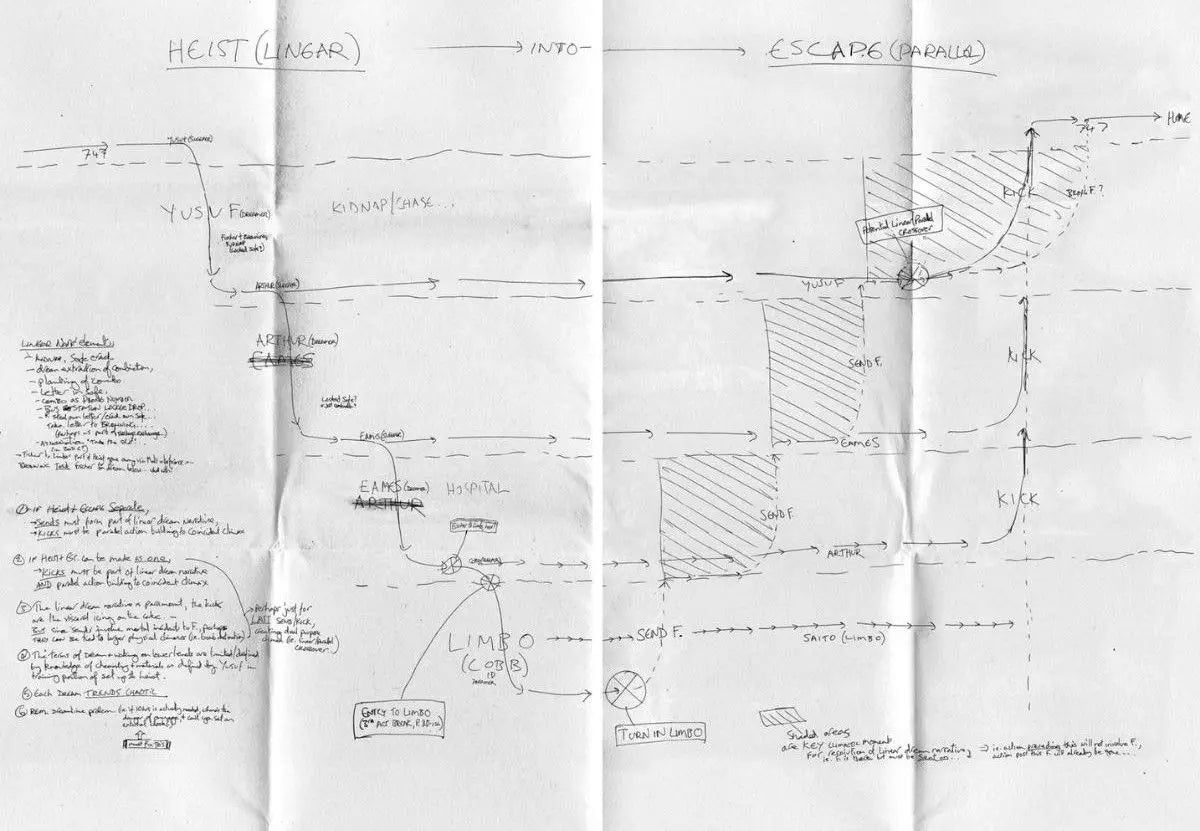Christopher Nolan, the renowned director, is not a fan of detailed plans when writing his screenplays. Instead, he prefers to "draw shapes, diagrams, and other structural elements" to keep the story flowing.
Take for example the plot map he used for “Inception.”

In the realm of storytelling, structure is omnipresent. We find models like the three-act diagram, the StoryGrid, or the hero's journey. However, Nolan says these models restrict his creativity. He prefers to think in terms of "forms" rather than strict rules.
This approach is reminiscent of that of Kurt Vonnegut, who taught “story forms” at Harvard. Vonnegut had reduced all stories to about eight unique forms. Nolan's plot map resembles Vonnegut's "Man in the Hole" story form, where the main character runs into trouble, gets out of it, and ends up better off because of the experience.
But Nolan, in true genius, adds even more complexity.
In "Inception", as Cobb gets closer to Limbo, he moves down the plot map, getting closer and closer to disaster. Then he struggles to come back to reality. Nolan's plot map is not only the shape of his story, it is also the way he designed the world - dreams within dreams.
“Inception” is one of the most complex mainstream films ever made, is 2.5 hours long and grossed an estimated $835 million at the box office. Yet Christopher Nolan planned out the entire story on a single page map. It's simply incredible.
So next time you're telling a story, try the idea of "form." This might feel more natural than you think.



Share: